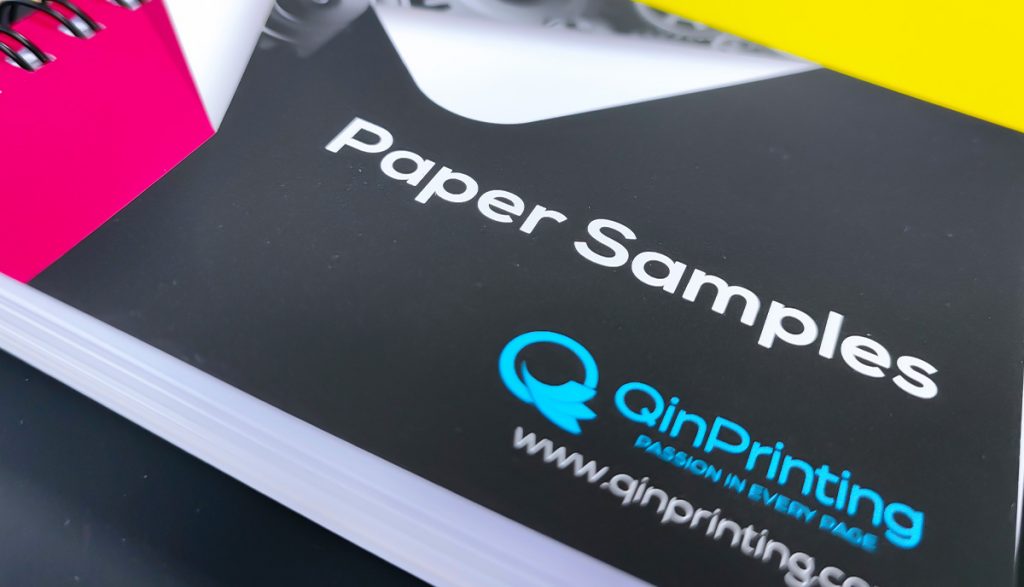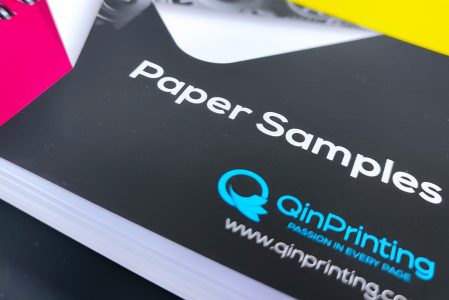Your expert introduction to the uses of soft touch lamination to enhance your printed marketing materials with a luxury look that won't break the bank

Image by QinPrinting
Let's face it. Despite the 90s hype about the oncoming digital revolution and the “paperless office”, today's digital world relies as much on printing — whether it's books, magazines, brochures, catalogs, or anything else — just as much as it ever did. And high-end printing services are the gateway to a whole new set of luxury market segments for businesses, including hotels, restaurants, resorts, exclusive stores and other establishments that cater to the rich and famous.
In today's world, everyone wants to look rich. Even if you have modest means, you can give the appearance of affluence with high-end printing services that specialize in producing premium printed products such as brochures, menus, business cards, flyers and other collateral materials like playing cards and table top games. And one of the most cost-effective ways to upgrade your printed materials to give them a truly luxurious finish is a relatively new process called soft touch lamination.
Whether it be for personal use or for business, there are several different laminations that you may want to explore before making your final decision on which type of lamination will work best for your needs. This blog post covers everything that you need to know about luxury soft touch lamination so you can make an informed decision when choosing which type is right for you.
What is soft touch lamination?
Soft touch lamination is the process of adhering a thin but strong layer of polyester film to your printed materials with a special adhesive to create a rich, high-quality finish that is resistant to scuffing, scratching and water damage. In essence, the process of soft touch lamination involves taking a printed document and placing it between two layers of clear polyester film. The document is then run through a heat laminator that melts the layers together to create a finished product that is both durable and attractive.
Why should you choose soft touch lamination?
The obvious reason you would want to use soft touch lamination is because it gives your printed materials a sophisticated, high-end look that is perfect for businesses that want to look classy, luxurious, and professional. Even if your advertising materials are printed in full-colour, soft touch lamination can help take them to the next level with a beautiful sheen that will make your brochures, menus and business cards stand out from the crowd. Soft touch lamination is also a superb choice because it gives your printed products a coat of durability that will extend their lifespan.
Soft touch lamination is also a good option to use if you are printing on cardstock that is prone to collecting dust. A soft touch lamination will help protect your documents from dust and other debris that might collect on the surface of your printed materials. And the special way that soft touch lamination wins out over other lamination techniques is the soft, velvety touch it has under your customer's fingers. A truly unique selling point that creates an unforgettable tactile experience.
Other types of lamination
There are two other types of laminations that you can choose from depending on the type of printed materials you are producing. While soft touch lamination is a fantastic option for high-end goods, it's helpful for you to understand the full range of choices available to you. So, to give you a bit of context, here's a quick look at the other possibilities and how they compare.
- Glossy Lamination: Glossy lamination gives your printed materials a high-gloss finish that is perfect for business cards, menus, invitations, catalogs, brochures and other printed materials that need to look extra flashy. This is often the type of lamination used to produce high-end business-to-business materials that are given to executives and other VIPs or distributed to affluent consumers.
- Matte Lamination: For printed materials that need to look more professional and less flashy, matte lamination is a good option. This type of lamination produces a non-glossy, high-quality finish that feels nice to the touch and is perfect for creating reports, brochures, thought leadership books and other printed materials that need to look business-like and serious.
We can make any laminate a little thicker to increase its shelf-life. But remember the thicker it is, the less flexible it will be. If you'd like to see samples, just get in touch and we'll be happy to send them to you by the mail.
Cost of soft touch lamination
As with most things in life, you get what you pay for. With soft touch lamination, which is still a new technique and so comes at a slight premium, the results look a lot more costly than they actually are. While soft touch lamination is not cheap compared to other lamination processes, at QinPrinting we believe in making the best printing options as widely accessible as possible and so we've developed relationships with top materials suppliers and improved our efficiency protocols to allow us to keep the price as low as possible. We can't give you an on-page cost without knowing the details of your print project, but call us and we'll gladly give you a precise, no-obligation quote tailored to your needs.
Pros of soft touch lamination
You can enjoy a wide range of benefits from using soft touch lamination on the right printing projects. Here are just a few of the pros of deploying this high-end technique:
- It's the ideal finish for items which need to exude a truly classy, luxurious feel such as high-end jewelry, watches, furnishings, and clothing
- It creates a durable costing which extends the life of your printed materials
- The price to quality ratio is good
- Adding soft touch lamination doesn't add significantly to the turnaround on your project or the weight of your shipment
- It's still a relatively new technique and so less commonly seen. It will really make your products stand out from the crowd
Cons of soft touch lamination
- The coating can dull color photography a little, so it's best used judiciously on the outer cover of a catalog, say, rather than all the pages
- All lamination techniques — including soft touch — add thickness to the pages. While this can be as little as a millimeter or two, it will affect the overall thickness and binding requirements for your printing project
- It's a little more expensive than other lamination options
The takeaway
Luxury soft touch lamination is an excellent choice for printed materials that need to be more durable, last longer and look more professional while signaling a sense of luxury and exclusivity. This type of lamination is also ideal for protecting and prolonging the lifespan of your printed products. Soft touch lamination does come with a price tag, so you should expect to pay more for this type of lamination than you would for other types of laminations. With that said, the end product is well worth the investment and will give your printed materials a sophisticated, high-end look that is sure to impress your customers.
Talk to us!
At QinPrinting, we have a firm commitment to personalized customer service along with a dedication to creating the highest-quality printed products at unbeatable prices. If you're a business customer, we're in business, too, so we understand you need to see a return on your investment. That's why we strive constantly to improve all our processes and protocols to make sure that every penny you spend works hard for you. Get in touch today to chat through your needs or ask us for a simple, no-obligation quote. We can't wait to help you take your print marketing to the next level!







